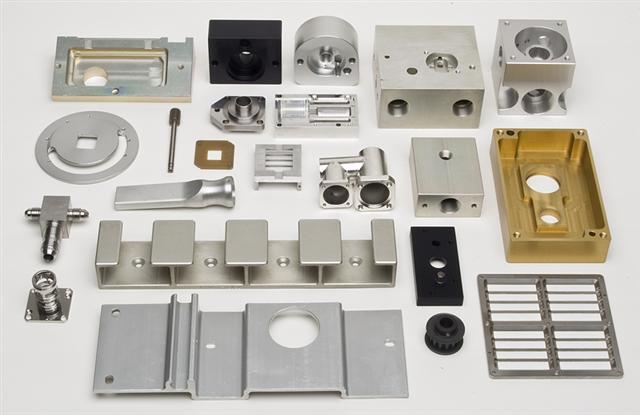CNC Milling stands for computer numerical control milling which is a process that makes use of computerized controls and cutting tools to create or produce a custom designed product. It can be used on a wide range of materials like glass or plastic to create a custom designed product. It is a mechanical process which also includes drilling, turning etc. to achieve the desired end result. In this process, the material is removed from the piece with the help of mechanical means.

Commonly used CNC Operations:
- Face Milling: In this milling operation, the axis of rotation of the cutting tool is perpendicular to the surface of the work piece. In this process, face cutting millers are used. These millers have teeth on the periphery and tool face. The former is used for cutting while the latter is used for finishing appliances. This process is used to create a flat surface or a contour on finished products I.e. for higher quality finishes for a product.
- Plain Milling: In this process, the axis of rotation of the cutting tool is parallel to the surface of the work piece which have teeth on the periphery. Narrow and wide cutter are used in this process depending upon the specifications of the work piece with regard to the depth and size of the cut.
- Angular Milling: Under this process, the angle of rotation of the cutting tool is at an angle which is relative to the surface of the work piece. The milling cutters are angled on the basis of the design of the machine. It produces angular features like serrations and grooves.
- Form Milling: This process helps in working on irregular surfaces and uses specialized cutters for the required application. It also helps in producing intricate designs and complex parts with the help of a single machine and its set-up.

CNC milling parts*
CNC milling parts is from alphaomegaswiss.com
Types of milling machines
- Knee type: These machines have a fixed spindle and a worktable which is vertically adjustable. Depending upon the position of the worktable, the knee can be raised or lowered on the given column.
- Ram-Type: There are XY axes in this machine. A spindle is fixed to a movable ram on the column which moves along the given axes.
- Bed type: These machines have a worktable which is fixed to the machine bed thus preventing the work piece from moving along the XY axes.
- Planer type: These machines are similar to the bed type machines but differ on the point that they can support multiple machine tools at once. Thus, it reduces the lead time required for complex parts.
Thus, keeping all these processes in mind, several factors must be considered before choosing a material on which CNC milling is to be applied. These factors can range from the properties of the material used to the cost effectiveness of using the material for machining. The material chosen influences the type of machine tools which have to be deployed in accordance to its cutting speed and strength. Keeping all this in mind, CNC milling can be used to machine a wide range of materials and producing custom designed parts.
